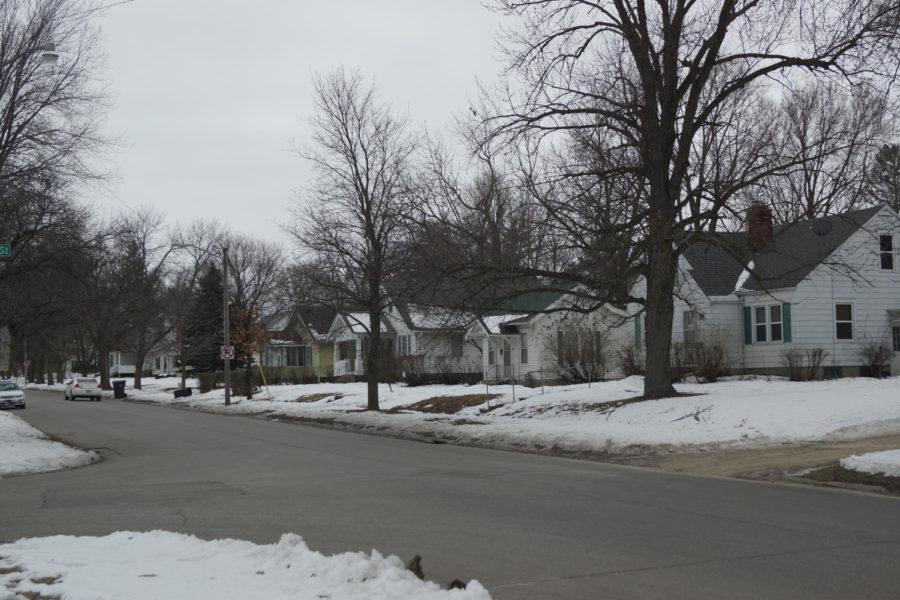New bill proposes revision of residency limits
Michael Rowley/Iowa State Daily
Ames housing codes could be changed by a bill that has come to the attention of Iowa legislation. The bill will raise maximum residency limits in low density zones.
February 18, 2015
The maximum residency limit in Ames may be susceptible to change if a bill makes its way through the Iowa legislature.
The current code encourages only families to live in low-density housing zones, by allowing no more than three unrelated adults may live in a house together in those zones. In high-density and some medium-density zones, residents may be allowed to live with more than three unrelated adults.
If a bill proposing to change the maximum residency limits in low-density zones passes, Ames may need to rewrite the part of the municipal code that defines a family.
According to the city of Ames municipal code, a family is “any number of people related by blood, marriage, adoption, guardianship or other duly-authorized custodial relationship, three unrelated people, two unrelated people and any children” related to either of them or any eight people who are residents of a family home or are handicapped.
“Having three people in a home will have the same impact on a neighborhood as a family,” said Jeff Benson, Ames city planner.
Rentals in medium density neighborhoods may have different agreements, as well as high-density zones, such as apartment complexes, which may have as many as five people living in one unit.
“Programs such as the South Campus Area Neighborhood Association were formed because of over occupancy,” said Councilwoman Gloria Betcher. “The idea is not to limit rentals all across Ames, but in low-density neighborhoods.”
The law for maximum residency in low-density neighborhoods was created in the 1960s and has been modified and changed multiple times. The city ran into a series of problems when the maximum residency was above three, said Bob Kindred, assistant city manager.
“These neighborhoods were not built for high numbers,” Kindred said. “The streets are not wide enough and there is not enough parking. People start using their back yards as parking lots.”
The city of Ames is not the only city in Iowa that regulates the occupancy. It is common among college towns in the United States and around Iowa.
“All rentals are required to have a rental inspection every time they create a rental property and every three to five years,” Benson said. “If someone is not meeting the code, zoning infractions may be implemented.”
A municipal infraction goes to court and the judge decides the outcome and whether or not the tenants or landlord should have to pay a fee.
The Ames Rental Association attempted to have the law changed in 2007 when it sued the city of Ames. The case went to the Iowa Supreme Court and because Ames zoning ordinance allows for an unlimited amount of related people to live together, as well as being rationally related to keeping the neighborhood quiet, there was no offense of the equal protection clause for the Iowa or United States Constitution.
Kelli Excell, a broker/manager at Triplett Companies in Ames, said if this new bill is worded correctly, the bill will allow the city to still enforce other rules and have the rest of the control.
If the bill were to pass, there would no longer be a limit of three unrelated people to one household and community members have conflicting views on the matter.
“There is no reason why if you’re related you can use five bedrooms [in a house], but if you are unrelated you can only use three,” Excell said. “It is difficult to tell people they cannot move in together when there is enough room for them, or that they have to kick people out.”
If the bill were to go into effect, the Ames City Council will have to look at what impact the law’s change will have on the neighborhoods.
“The neighborhoods can’t really do more than they are doing now,” Betcher said.
The bill is to have a hearing in the spring legislature.







